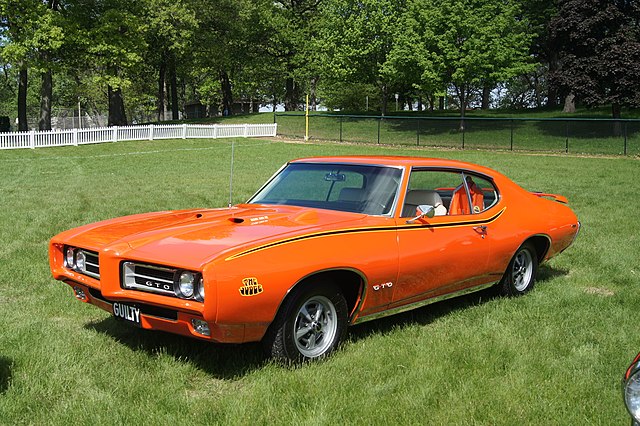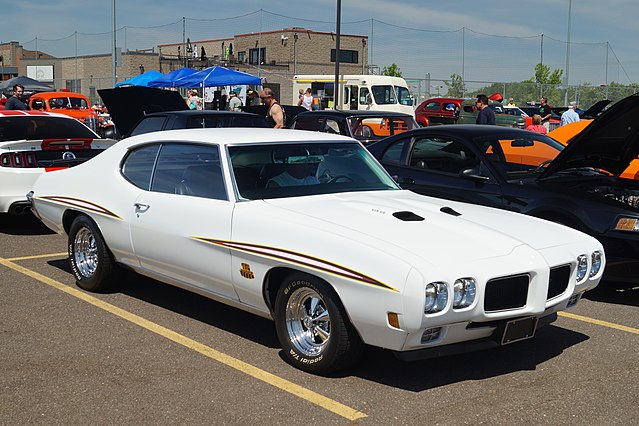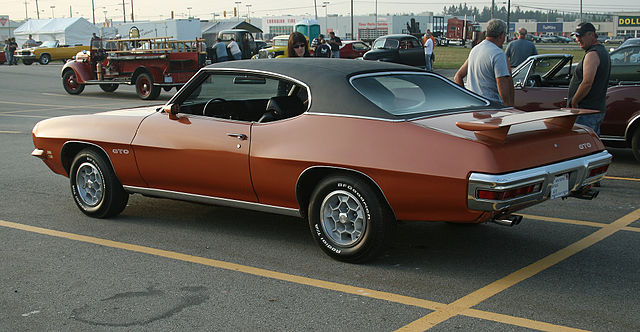
The Pontiac GTO, affectionately known as the “Goat,” remains one of the most iconic American muscle cars in automotive history. Its second generation, spanning from 1968 to 1972, marked a period of significant evolution in design, performance, and cultural impact.
This article delves into the details of the second-generation GTO, exploring its development, features, and legacy.
Overview of the Second Generation

The Pontiac GTO’s second generation heralded major changes that reflected broader shifts in the auto industry and consumer preferences during the late 1960s and early 1970s.
During this era, the GTO not only faced internal competition from other Pontiac models but also contended with an increasingly crowded market of high-performance vehicles.
Historical Context and Development
Introduced in 1968, the second-generation GTO received a comprehensive redesign that aligned with General Motors’ decision to reinvigorate its entire lineup. The car was built on the GM A-body platform, which it shared with other models like the Chevrolet Chevelle and the Oldsmobile Cutlass.
This generation was marked by a more curvaceous body, a shift away from the rectilinear styling of the first generation.
Design and Styling
The 1968 model debuted with a significantly revamped exterior. Notable features included a more aggressive grille, a shorter wheelbase, and a long hood that emphasized its muscular aesthetics.
The Endura front bumper, which could absorb low-speed impacts without permanent deformation, became a defining feature. This generation also saw the introduction of the iconic hideaway headlights, available as an option that further enhanced the GTO’s aggressive stance.
Performance and Specifications

The GTO’s appeal largely stemmed from its formidable performance capabilities. The standard engine in 1968 was a 400 cubic inch (6.6-liter) V8, which came in several variations.
Engine Options and Output
- Standard Engine: The base model came with a 400 CID V8 that produced 350 horsepower.
- High-Output (HO) Version: This variant upped the power to 360 horsepower with a revised camshaft and other modifications.
- Ram Air Options: For those seeking even more power, Pontiac offered the Ram Air II and, later, the Ram Air IV options, which featured improved heads, cam profiles, and intake setups, pushing outputs to over 370 horsepower.
Transmission Choices
Owners could choose between a three-speed manual transmission, which was standard, a four-speed manual, or a three-speed Turbo-Hydramatic automatic transmission. These choices allowed drivers to tailor the GTO’s performance to their preferences, whether it was for daily driving or more spirited endeavors.
Model Year Changes and Special Editions

Each model year from 1968 to 1972 brought subtle changes and special editions that kept the GTO fresh and appealing.
1969: The Judge
1969 saw the introduction of “The Judge,” a performance and style package that responded to the Plymouth Road Runner. Featuring vibrant colors, unique striping, and boasting the Ram Air III engine as standard, The Judge was marketed under the slogan “Here comes The Judge,” popularized by the TV show “Laugh-In.”
Subsequent Years
- 1970: This year marked a slight redesign with a new front end and more powerful engines, including the introduction of the 455 CID V8 in the Judge models.
- 1971-1972: Amid tightening emission regulations and fuel crises, the GTO began to see reductions in power. However, it still maintained performance with the availability of the 455 CID engine, though horsepower ratings were adjusted to reflect new measurement standards.
Cultural Impact and Legacy

The Pontiac GTO of the late 1960s and early 1970s captured the spirit of its age. It was not just a car; it was a cultural icon that symbolized freedom and power. Its appearances in films, television shows, and songs only solidified its status as a quintessential American muscle car.
Collector Status and Market Today
Today, the second-generation GTO holds a revered spot in the collector car market. Pristine examples, especially those of rare variants like The Judge or those equipped with Ram Air IV engines, command high prices. The car’s blend of style, power, and cultural significance continues to resonate with enthusiasts around the world.
Restoration and Maintenance Challenges

Restoring a second-generation Pontiac GTO can be a rewarding yet challenging endeavor for classic car enthusiasts. As these vehicles age, they encounter typical issues related to wear and maintenance, compounded by the specific challenges of sourcing authentic parts and maintaining engine performance.
Finding Authentic Parts
One of the most significant challenges in restoring a GTO is locating original or high-quality reproduction parts. Many components, especially those unique to specific models like The Judge, are no longer manufactured. Enthusiasts often rely on specialized auto restoration shops, online forums, and swap meets to source these rare parts.
Companies that specialize in classic Pontiac parts can sometimes be a lifeline, offering everything from interior trim pieces to complete engine blocks that meet original specifications.
Engine and Mechanical Restoration
Restoring the GTO’s engine to its original performance level requires expertise in classic car mechanics and often a good deal of detective work. Mechanics must be familiar with the specific needs of the GTO’s V8 engines, including the intricacies of the Ram Air systems.
Proper tuning and calibration are essential to achieve the original driving dynamics and performance, which can be a meticulous process involving carburetor adjustments, ignition timing, and exhaust system checks.
Bodywork and Paint
The GTO’s bodywork is another area where restoration can be particularly challenging. Rust is a common issue, especially in cars from regions with harsh winters and heavy road salt use. Skilled bodywork specialists must address these issues, often requiring extensive sheet metal repair or replacement to restore the car’s iconic lines and shapes.
Additionally, matching the original paint colors and finishes, especially for special editions like The Judge, requires precise color matching techniques and high-quality materials.
Upholstery and Interior
The interior of a classic GTO, while simpler than many modern vehicles, still presents restoration challenges, particularly in matching the original materials and styles used in the late 1960s and early 1970s. Authentic reproduction of upholstery fabrics, carpeting, and panel materials is crucial for a faithful restoration.
Special attention must be given to the dashboard, as it houses unique instruments and often features wood grain or other distinctive finishes that are critical to the car’s authentic feel.
Ongoing Maintenance
Maintaining a restored GTO involves more than just regular servicing. Owners must be vigilant about using the correct types of fluids and parts that comply with the vehicle’s age and design to prevent undue wear and tear.
Storing the vehicle in a climate-controlled environment and using it regularly, but carefully, can help keep mechanical components in good working order and prevent the common pitfalls of long-term storage such as seal degradation and fluid leaks.
Conclusion
The second-generation Pontiac GTO exemplifies the zenith of American muscle car design and performance. With its bold styling, powerful engines, and cultural cachet, it remains a symbol of an era defined by speed and style. As it continues to be celebrated in car shows and collector auctions, the legacy of the GTO’s second generation endures, capturing the hearts of new and old enthusiasts alike.
